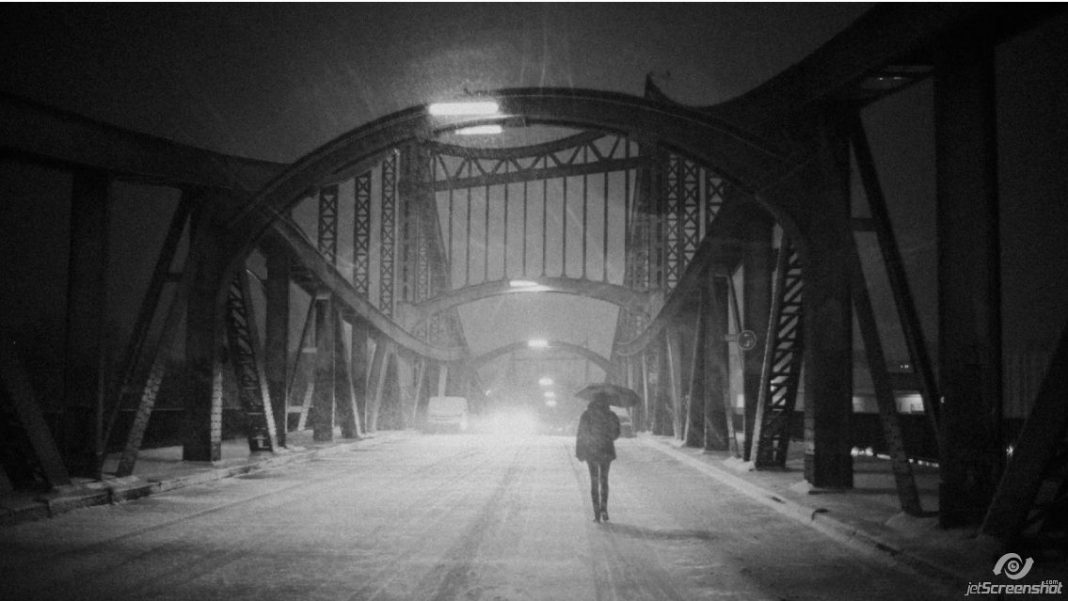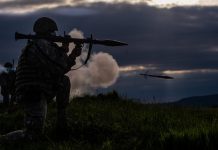By Ben Hodges, Julian Lindley-French, for CEPA
“A transition from sequential and concentrated actions to continuous and distributed ones, conducted simultaneously in all spheres of confrontation, and also in distant theaters of military operations is occurring.”
General Valeriy Gerasimov
In its very legalistic way, the decision by a German regulator to suspend the Nord Stream 2 gas pipeline may just be the first real evidence that the country is finally thinking strategically.
If so, it is not a moment too soon. Europeans urgently need to re-consider any policy that deepens their energy dependence on Russia, even if that means missing carbon emission targets. It would be strategic illiteracy of the worst kind to put the continent’s freedom at risk simply to meet arbitrary climate change targets, important though they are.
President Vladimir Putin will always use the power he is given by Europe against Europe. The grand strategic aim of the Kremlin is to force much of Central and Eastern Europe (CEE), including the Baltic states, into a new Russian sphere of influence. That is why thousands of desperate migrants are being forced towards the Belarus border with Poland, Lithuania, and Latvia; why there is a threat to cut gas supplies to much of CEE from Russia; why Russian nuclear bombers fly down the North Sea and into the English Channel; and why some 90,000 troops of Russia’s most capable military units gather on Ukraine’s eastern and northern borders.
This marks the application of the Gerasimov Doctrine, by which Russia simultaneously applies “strategic maskirovka” (deception) and “dezinformatsiya” (disinformation) together with so-called “active measures” to keep a deeply disjointed and feeble Europe politically and militarily off-balance. The most immediate aim is to prevent Ukraine from crossing a Russian red line by moving formally to join NATO. That was the purpose of Putin’s September 2021 essay in which he denied Ukraine had ever been an independent state and was thus an integral part of Russia. This is dangerous language and requires a response — even though President Joe Biden recently told President Volodymyr Zelenskyy that NATO membership is a long way off, Ukraine’s eventual integration into free Europe must now be a shared allied strategic aim.
The use of maskirovka and desinformatsiya is a war that is short of war, existing in the grey zone between war and peace. Former NATO Supreme Allied Commander, General Phil Breedlove, says that Russia already sees itself at war with the West and that its chosen weapon is disinformation. It is a purposeful “5D” warfare strategy that combines implied destruction with disinformation, destabilization, disruption, and deception, and which is driven from the very top of the Russian state through multiple messaging and by ramping up the threat of force.
Appeasing Putin
With winter coming and Europe in some disarray, Putin may think he will never have a better opportunity to exploit a sixth “D,” energy dependence. Indeed, a hitherto craven European Union (EU) has appeared terrified that Russia, and its puppet Belarus, will cut gas supplies to much of the continent. The Kremlin’s clumsy efforts of late to coerce the European Commission into approving the newly built but still unused Nord Stream 2 gas pipeline — which runs along the floor of the Baltic Sea — by hiking gas prices on the spot market, demonstrated exactly why Russia will never be a reliable or trusted energy partner. Had Germany led Europe to even greater reliance on Russian gas (as it still might) it would not merely have placed Russia’s noose around its own neck, but much of the rest of Europe’s too. One can almost hear the sound of chickens coming home to roost.
The EU has thus far has made a mockery of the empty rhetoric of bloc sovereignty. Indeed, it has been little short of appeasement, even though Horst Seehofer, the German Minister of the Interior, did at least acknowledge last month that the Kremlin was the architect of the current tensions. If the EU cannot summon the diplomatic and economic power to pressure the Kremlin to stop Belarus from turning desperate migrants into pawns, there is little hope it can be dissuaded by Europeans from pursuing its grander ambitions.
Instead of focusing on the minnow Lukashenko and Russia’s Belarus colony, the EU should be directing its ire towards the Kremlin. Instead, the EU prefers to criticize the Poles for how they are dealing with a desperate situation, just as it recently criticized Ukraine for using drones to retaliate against Russia’s use of the artillery that regularly kills Ukrainian soldiers. The threat of EU sanctions, including airlines flying migrants to Minsk is welcome, but in some respects, it helps the Russian cause by creating yet more tension with Turkey, one of the migrant transit points. There is also the potential for a dangerous and rapid escalation of tensions, particularly if Belarussian border guards trigger an armed confrontation close to the strategically vital Suwalki Corridor, which not only links the EU and NATO to the Baltic states but Russia with its armed enclave Kaliningrad. It is all too easy to see Russia moving to resolve a “humanitarian crisis” in or near Kaliningrad by engineering such a confrontation.
Russian and Belarussian special forces have been observed carrying out reconnaissance missions to time the responses of Latvian security forces to attempted incursions by migrants. Such actions have not gone unnoticed in Ukraine. One only has to look at a map to see it would be relatively easy be for Russian forces to the north in Belarus and the east to attack the Ukrainian capital. It is almost as though Russia’s recent Zapad-21 military exercise never ended and Russia is undertaking a dress rehearsal for a full-scale invasion of Ukraine . . . or not.
Chess or Poker?
Will Putin invade Ukraine? Naturally, the Kremlin denies it has any intention to attack, but then the Gerasimov Doctrine might mean Russia does not have to. The threat of force might well be enough to coerce a Ukraine that is profoundly uncertain about the real strength of support from its European “partners.” However, Putin has been reinforcing Russia’s military capacity around Ukraine’s eastern and northern borders for many months. Russia now has almost all the military pieces in place so that should Putin decide to act, he could. And quickly. What better way for Putin to subjugate Ukraine, humiliate the EU, divide NATO, and thus assure his legacy as a “great” Russian who saved Ukraine from the West?
It is also entirely in Putin’s gift to end the tensions now if he so wishes. Yet there is little chance that he will. The former KGB operative sees himself as a grandmaster of global strategic chess when in fact his real game is stud poker. The tragedy for the people of Central and Eastern Europe is that Russia’s position is primarily due to western European dithering and incompetence, which has transformed Russia’s genuine weakness into illusory strength. The Nord Stream 2 decision may just be the first sign that Europe is prepared to raise the stakes.
Power and Strategy
Even if Moscow does take its foot off Ukraine’s throat for the moment, it is unlikely to mark a new dawn in either Russia-Ukraine or Russia-West relations. The current crisis is a clash of wills. Putin is calling Europe’s bluff and seeking to demonstrate an Atlantic Alliance divided. Have Europe’s political leaders the collective courage and will to counter Russia? Europe’s growing energy dependence on Russia leads it to believe that it has Europeans just where it wants them and the weapon to potentially decouple the US from its European allies. (Note too that the Kremlin understands that its energy weapon is rusting — western Europe’s increasing use of renewable energy may one day nullify the Russian threat.) In the meantime, the US administration is deeply concerned about European hesitancy, as both Secretary of State Tony Blinken and Secretary of Defense Lloyd Austin have made plain.
Deterring Russia from its strategic direction of travel will require Europeans and their North American allies to collectively apply counter-pressure. That will only be possible if the allies adopt their own active measures in the form of a counter-5D warfare strategy with the main effort centered on NATO. In short, the Kremlin must understand it will pay a heavy price if it continues with such aggression. Right now, that means facing down Russia, politically, economically, and militarily. Over the medium term, such deterrence will require effective counter-messaging, information operations, offensive cyber operations, a new allied balance between military power projection and people/information protection, resiliency, robustness and redundancy in defense, and an EU-NATO strategic partnership that can generate a range of incentives and constraints on Russian policy.
Russia will only be stopped when it is challenged, and the Nord Stream 2 decision might, just might, suggest European leaders now recognize that. If not, then what is happening today will just be the beginning of repeated Kremlin-generated confrontations that will demand of European leaders both the political will and the means to deter Russia, something that for too long they have been reluctant to do. They will need to grow up strategically and stop rendering Europe and Europeans so systemically vulnerable to Russian energy.
The American economist J.K. Galbraith once famously said that power is as power does. Putin needs to understand that power, like gas, can flow two ways. Nord Stream 2? Scrap it!
By Ben Hodges, Julian Lindley-French, for CEPA
Lieut. General (Ret.) Ben Hodges is Pershing Chair in Strategic Studies at the Center for European Policy Analysis in Washington, DC.
Professor Julian Lindley-French is Chairman of The Alphen Group.
Photo: Winter day in Berlin, Germany. Credit: Johannes Roth/Unsplash.
Europe’s Edge is an online journal covering crucial topics in the transatlantic policy debate. All opinions are those of the author and do not necessarily represent the position or views of the institutions they represent or the Center for European Policy Analysis.





